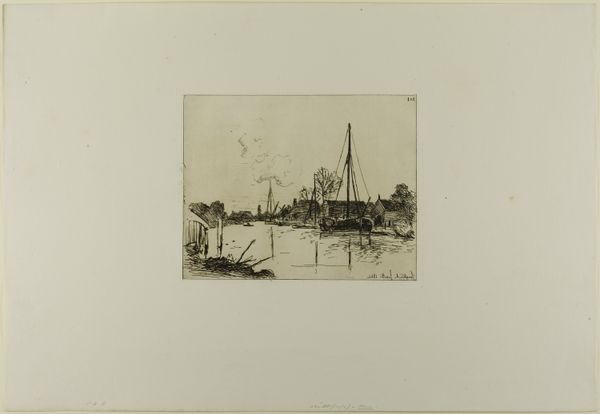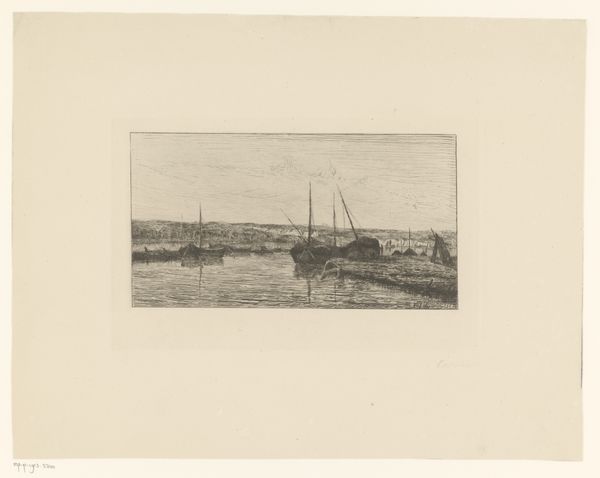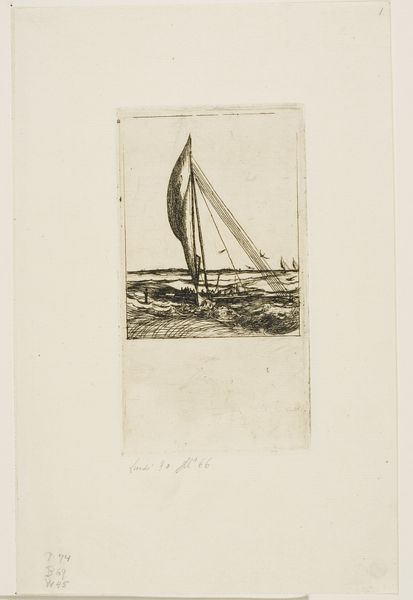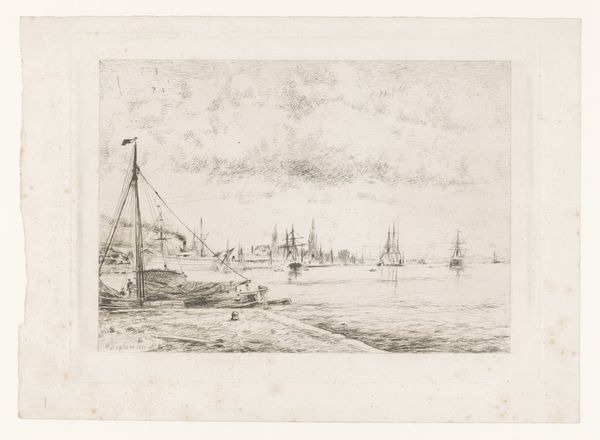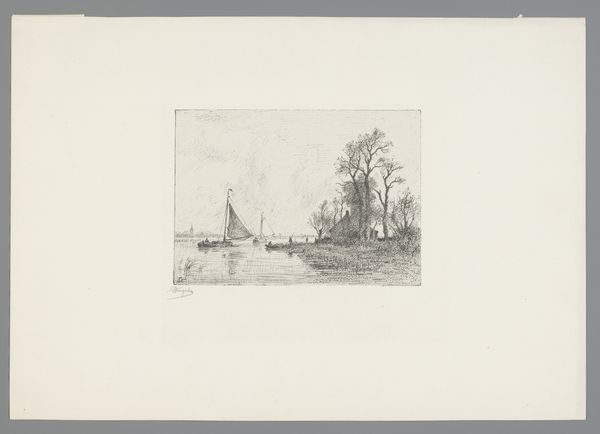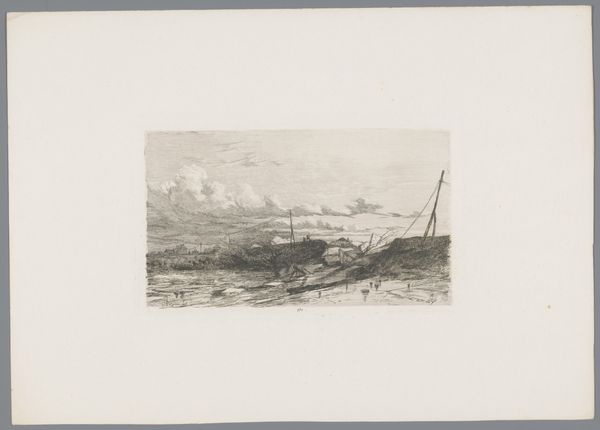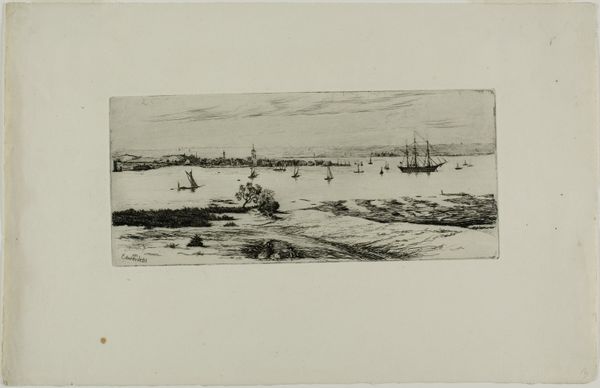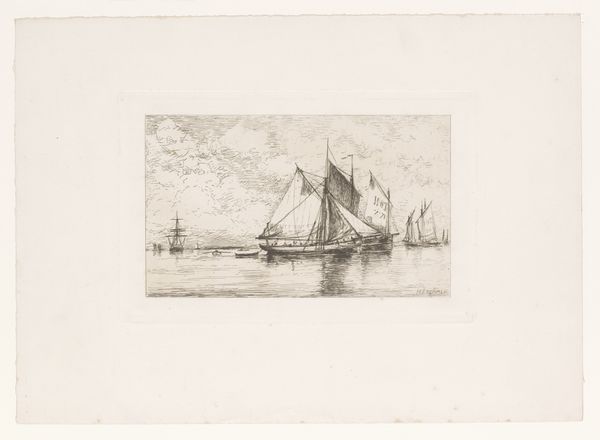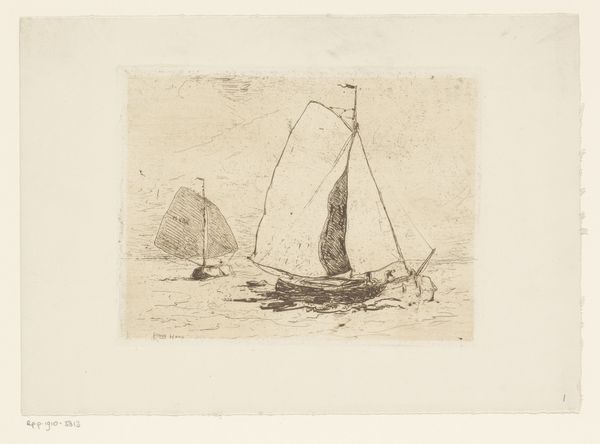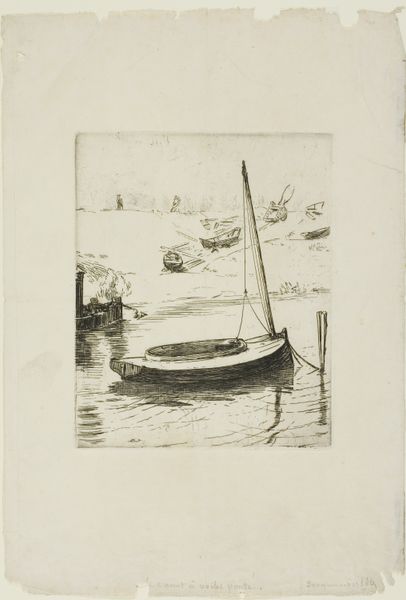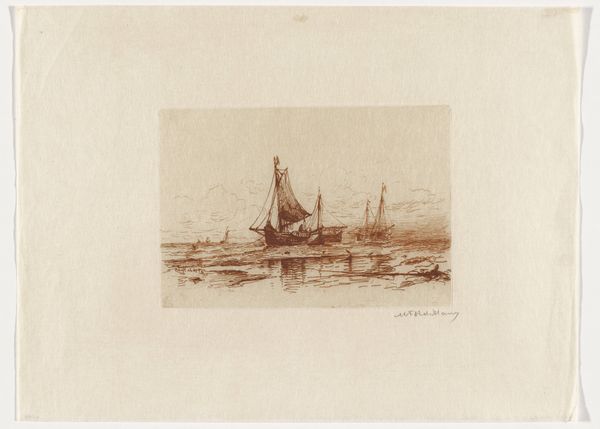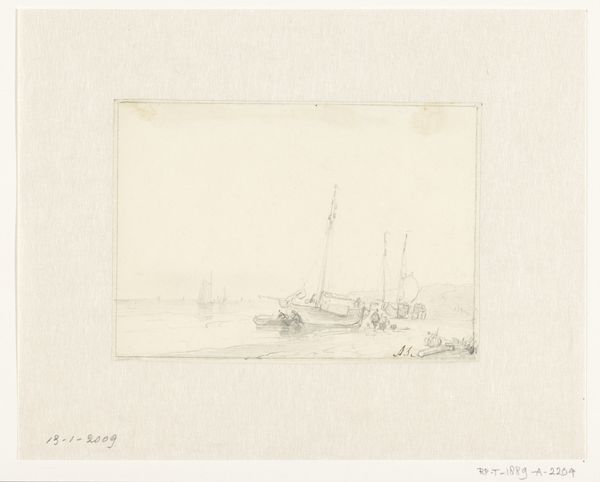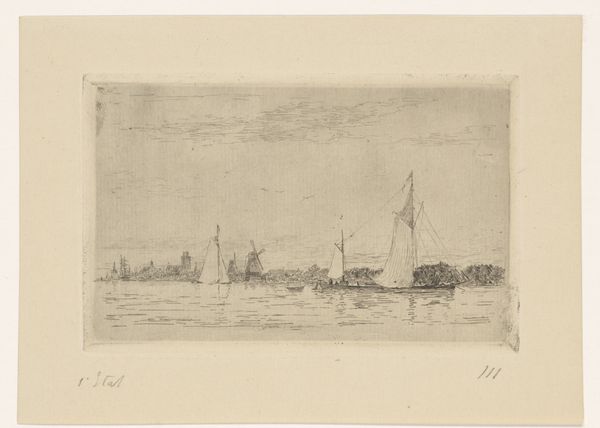
The Moored Boat, from Cahier de six eaux-fortes, vues de Hollande 1862
0:00
0:00
drawing, print, etching, plein-air, paper
#
drawing
# print
#
etching
#
plein-air
#
landscape
#
etching
#
paper
Dimensions: 167 × 206 mm (image); 177 × 215 mm (plate); 359 × 523 mm (sheet)
Copyright: Public Domain
Curator: This etching, dating to 1862, is titled "The Moored Boat, from Cahier de six eaux-fortes, vues de Hollande" by Johan Barthold Jongkind, currently residing at the Art Institute of Chicago. Editor: It's incredible how much atmosphere Jongkind captures with so few lines. It evokes a sense of quiet industry and that liminal space between land and water. Curator: Indeed. Jongkind was a master of evoking atmosphere, drawing deeply from Dutch maritime traditions, imbuing the vessel with powerful associations of exploration, trade, and a symbiotic connection between humanity and nature. Notice how the sails and masts reach skyward like a conduit. Editor: I’m struck by the sheer process. Creating the etching itself, acid biting into the metal plate, feels connected to shipbuilding techniques – corrosive elements shaping both the image and the seafaring vessel itself. What kind of labor would have supported boat-building then? Who were these boat-makers and where were they in the broader society? Curator: The moored boat acts as a focal point, and the surrounding activity hints at a larger narrative. Jongkind’s use of light is masterful, guiding our eyes from the foreground boat to the distant shore. The image evokes the Dutch Golden Age and their naval dominance; that flag tells tales of national identity and power. Editor: Yes, it raises questions about that power – about whose labor fuels this national success. Look at the details: etching, traditionally printed on paper. How accessible was it for working people to purchase this imagery in 1862? Where it was distributed and consumed raises another important point about Jongkind's engagement in marketplace, making images. Curator: Perhaps it served as an aspiration for those who dreamt of maritime adventures or symbolized the fruits of Dutch commerce. The enduring appeal rests on the ability to simultaneously capture the particular and the universal, inviting viewers to consider their own relationship to the sea. Editor: Precisely, the specific circumstances of its creation and circulation shaped its symbolic potential and made the imagery available, turning into art as a cultural artefact, for diverse purposes and perspectives. It highlights both a material past and the possibilities within artistic production.
Comments
No comments
Be the first to comment and join the conversation on the ultimate creative platform.
